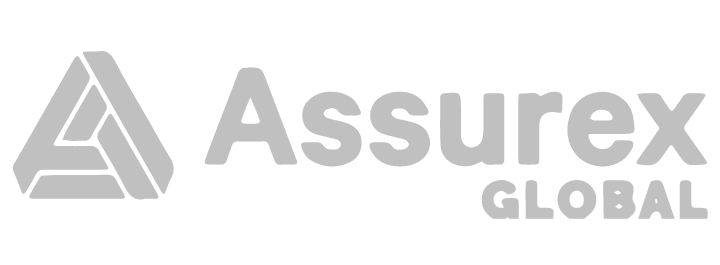
In the evolving economic landscape, commercial insurance rates continue to trend upward. As your trusted partner, our focus is on empowering you to understand the reasons behind these increases and offer strategies to help you take control of your destiny.
Together, we can roll up our sleeves and put in the work necessary to improve your risk profile through strategic decisions and implementing effective measures that ultimately make you a more appealing risk to carriers. As always, our commitment is to work alongside you, leveraging our expertise and resources to help you beat the market trends.
RATE TRENDS
According to Ivan’s Index for the third quarter, there was an observed increase in the average premium renewal rate across all primary commercial business lines, except for workers’ compensation. During Q3 2023, average renewal rate hikes were noticeable when compared to the same timeframe last year:
- Commercial Auto: ⇑ 7% (6.5% in Q3 2022)
- Business Owner’s Policy: ⇑ 7.74% (7.56% in Q3 2022)
- General Liability: ⇑ 5.43% (5.21% in Q3 2022)
- Commercial Property: ⇑ 10.08% (9.77% in Q3 2022)
- Umbrella: ⇑ 5.29% (5.12% in Q3 2022)
Workers’ compensation stands out as the sole business line to experience a drop, with its renewal rate witnessing a roughly 1% reduction, in contrast to the 1.1% decrease in 2022.
DECODING THE DRIVERS BEHIND RISING COMMERCIAL INSURANCE RATES
Several factors are driving the rise in commercial insurance rates. These include changes in regulatory compliance, increased exposure to risks in today’s globalized economy, the growing frequency and severity of natural disasters, and advancements in technology leading to new types of risks. Below, we will explore each of these drivers in detail to give you a comprehensive understanding of why commercial insurance rates are on the rise.
- Economic Factors: The state of the economy holds significant sway over commercial insurance rates. With the expansion of businesses in periods of economic growth, there is a corresponding escalation in exposures. This escalation, in turn, paves the way for an increase in insurance premiums. Moreover, inflation plays a crucial role by driving up prices across various domains, including construction, rebuilding, and overall property costs, which further impacts insurance premiums
- Regulatory Changes in the Industry: Regulatory adjustments in the industry can also impact insurance rates. New regulations may necessitate higher coverage limits or additional types of coverage, subsequently resulting in increased premiums. A recent example of this was this year’s MCCA fund increases which significantly impacted businesses with large fleets.
- Intensified Underwriting: As underwriters delve deeper into assessing risks, scrutinizing every aspect of a business’s operations, potential liabilities often come to light. This heightened scrutiny can lead to increased rates, reflecting the perceived increase in risk.
- Natural Disasters and Calamities: Natural disasters and calamities, including hail storms, hurricanes, floods, and winter storms, can inflict substantial damage on businesses. To compensate for the heightened risk and potential losses, carriers may raise rates.
FEELING THE IMPACT: BUSINESSES IN THE CROSSHAIRS
Rising commercial insurance rates have several implications for businesses:
- Increased Costs: Higher insurance premiums can affect a business’s bottom line. Small businesses may particularly struggle to afford these escalating costs.
- Changes in Coverage: To manage costs, some businesses may adjust their coverage, opting for higher deductibles or reducing coverage limits, potentially exposing them to greater risks.
- Risk Management: The increasing insurance rates underscore the importance of effective risk management strategies. Identifying and mitigating risks is crucial to control your own destiny when it comes to insurance costs.
CHARTING A COURSE: NAVIGATING THE CHANGING INSURANCE LANDSCAPE
To navigate the changing insurance landscape, businesses and individuals can consider the following steps:
Review Policies Regularly: A regular review of insurance policies can ensure they still meet the needs and provide adequate coverage for the business. Adjustments may be necessary as circumstances change.
Work with an Influential Insurance Broker: An insurance broker with a great reputation with insurance carriers can guide businesses and individuals through the insurance market, helping compare rates, retain risks, and find the best coverage options.
Implement Risk Management Strategies: Excellence in organizational practices is rewarded with more favorable insurance rates and credits. By taking control of your destiny through the development and implementation of comprehensive risk management strategies – including robust safety protocols, thorough employee training, and well-planned disaster preparedness measures – it becomes possible to significantly reduce insurance costs.
Participate in Holistic Reviews: A holistic review of insurance needs can reveal opportunities for cost savings. Sometimes when multiple insurance policies are strategically amalgamated under the same provider, leveraging overall spend, it can result in lower overall premiums.
Risk Retention: As part of their risk management strategy, businesses might consider risk retention or self-insurance for certain types of risks. This involves setting aside funds to cover potential losses rather than purchasing insurance. It can be a cost-effective strategy for predictable and manageable risks, but it requires a thorough understanding of the business’s risk profile.
Explore Alternative Risk Funding Strategies: Just as there are multiple ways to obtain a new car (lease, rent, buy, etc.), there are multiple paths of risk funding. In today’s volatile economic climate, alternative risk funding strategies can offer a pathway to greater financial flexibility and improved risk management. Kapnick Insurance provides a range of options, from fully insured programs to self-insured retentions and captives. Explore these opportunities with us and find the risk funding strategy that aligns best with your organization’s goals and risk tolerance.
Explore Parametric Insurance Options: Parametric insurance is an innovative product that pays out claims not based on losses incurred, but on the occurrence of specific, predetermined events. This type of insurance can provide swift compensation and is particularly useful in dealing with risks where it’s difficult to assess the actual damage, such as natural disasters. Parametric insurance can serve as an efficient way to supplement traditional insurance coverage and can be tailored specifically to a business’s risk profile.
As we navigate the ever-evolving insurance market, the importance of strategic foresight and informed decision-making cannot be overstated. Kapnick Insurance is your partner in this journey, providing expert guidance and tailored solutions to meet your unique needs. Come early January, we will unveil our 2024 Market Forecast. This essential resource offers a wealth of insights, empowering you with the knowledge needed to anticipate market trends and effectively manage costs.
In the face of rising commercial insurance rates, knowledge becomes the power to control your destiny. With Kapnick Insurance by your side, you’re not just reacting to changes, but anticipating them and transforming uncertainty into confidence with our professional expertise, client-focused approach and commitment to your success.
WANT TO LEARN MORE? REACH OUT:




